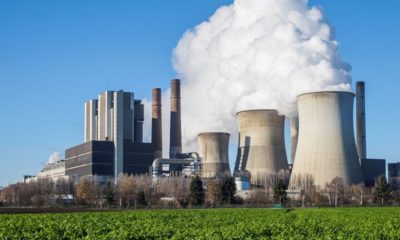Climate Change
Carbon Dioxide Emissions on Steady Upward Trend
Carbon dioxide emissions rose in 2019 for the third straight year, according to the latest Global Carbon Project estimate, and do not look set to fall before the end of the next decade.
This is more bad news for United Nations negotiators in Madrid to consider as they aim to hammer out rules for implementing the 2015 Paris international agreement on limiting climate change.
This year's 0.6% growth in CO2 emissions is slower than the previous two years. Steep declines in coal use in the United States and Europe, combined with weaker global economic growth, were behind the slowdown, the report says.
But slowing growth is not enough. A recent United Nations report (https://www.unenvironment.org/resources/emissions-gap-report-2019) said emissions must decline by at least 2.7% per year to keep the planet from overheating.
Emissions look likely to continue in the wrong direction for years to come, according to Stanford University Earth scientist Rob Jackson, chair of the Global Carbon Project, the international research consortium that published the findings Tuesday in Earth System Science Data (https://www.earth-syst-sci-data.net/11/1783/2019/).
“I am, I have to confess, not very optimistic that in a five-to-year timescale, we'll see a peak in emissions,” he said. “I hope I'm wrong. I really hope I'm wrong.”
Widening gap
The data follow a bleak report from the United Nations on the widening gap between what the world needs to do to prevent the worst impacts of climate change and what countries actually are doing to meet their Paris pledges to reduce greenhouse gas emissions.
Under the Paris agreement, countries aim to limit global warming to “well under” 2 degrees Celsius and to “pursue efforts” to keep it to 1.5C over pre-industrial times. Currently, the planet has warmed about 1C, raising sea levels and producing more weather extremes, including heat waves, droughts, and heavy storms.
The U.N. Emissions Gap Report finds that the world is headed for 3.4 to 3.9 degrees of warming by 2100. If all the Paris pledges are met, temperatures still will warm by 3.2 degrees, with potentially devastating impacts on food security, water supplies and public health.
The report says countries need to triple their greenhouse gas reductions to reach the 2-degree target and cut them five-fold to reach 1.5 degrees.
That report is based on 2018 data. The new report released Tuesday offers the first look at 2019.
Coal, oil
The good news is that, compared to last year, the world burned less coal, the most carbon-intensive fuel. Coal emissions were down 0.9%, mostly from sharp falls in the United States and Europe (both about 10%). China and India increased coal emissions (0.8% and 2%, respectively), but less than in recent years.
Oil makes up the second-largest share of greenhouse gas emissions, mainly from transportation. Unlike coal, however, emissions from oil have been growing steadily for decades and show no signs of decreasing. They were up 0.9% this year.
Electric vehicle sales are rising, but not nearly fast enough to offset the growing global fleet of gas and diesel engines.
For example, more than a million electric vehicles were sold last year in China, the world's largest auto market.
“They led the world in electric vehicle purchases,” Jackson said. “But they still put 20-million-plus new gasoline-based vehicles on their roads.”
Natural gas
The decline in coal CO2 emissions also was partly canceled out by rapid growth in natural gas. It's the fastest-growing source of greenhouse gas emissions worldwide. More than one-third of the increase in global CO2 over the last decade has come from the rise of natural gas.
Burning natural gas produces 40% less carbon dioxide than coal, and the switch from coal to gas has played a major role in reducing emissions in the United States.
Globally, however, most natural gas is fueling new power plants, not replacing coal, Jackson said.
“We're not taking fossil fuels offline,” he added. “We're just adding new production.”
The same pattern is true for renewable energy, he said. While increasing amounts of wind and solar power are coming online, they mainly are meeting demand growth, not replacing fossil fuels.
“Public policies need to place far more importance on directly cutting back the use of fossil fuels,” the report says.
Copyright (c) 2019 Federal Information & News Dispatch, Inc.













Pingback: A War on Beef Has Begun | JnBroad